The Heart + Soul of Your Nonprofit Brand
A good brand personality helps to do more good.
 Brand personality is one of seven key elements of a brand. And while I’ve described an organization’s brand promise as the linchpin that holds all these separate key elements together, brand personality is really the heart and soul of a brand.
Brand personality is one of seven key elements of a brand. And while I’ve described an organization’s brand promise as the linchpin that holds all these separate key elements together, brand personality is really the heart and soul of a brand.
A nonprofit’s brand personality can be defined various ways; but simply put, it’s an organizations character. It’s how the organization talks, thinks, behaves, and responds. It’s what attracts or repels people. It’s the aspects of your organization that go beyond physical appearances and are more easily identified as your personality traits.
In nonprofit marketing terms, it has long been accepted that people don’t choose to support organizations based on their mission and purpose alone. Rather, they also choose to support organizations based on their symbolic value.
Brand personalities that inspire trust, encourage loyalty, create connections, and foster bonds are those that are considered more desirable, distinguishable, and memorable.
Attractive personalities attract supporters.
People tend to be attracted to brand personalities that align with or enhance their own self-image. This is especially true today when so many organizations have similar or overlapping missions.
Many times, in the absence of a well-defined and intentionally executed organizational brand personality, supporters and potential supporters “fill in the gap” with their own perceptions. Through years of conducting market research, we’ve found that brands with weak or unidentifiable brand personalities are usually labeled with negative descriptors — people usually think of them as dull, faceless, boring, backwards, complex, conservative, etc.
With so many organizations calling for time, energy, and resources, the brands that communicate their personality effectively are often the ones that best resonate with supporters.
Capturing and communicating a captivating personality.
The first step in capturing and developing a captivating brand personality is to take an audience-centered approach. That is, do your homework (and, ideally, research) to gain intimate knowledge of your supporters’ and your potential supporters’ behaviors, needs, and goals.
Uniqueness and authenticity are central to developing affirmation and passion for your cause and purpose. A brand personality can’t simply be layered on. It should permeate throughout the organization, affecting operational policies, hiring, staff attitudes, and even your organizational culture. In reality, organizational behavior is the foundation from which an organization can build the outward expression of its brand personality.
Be consistent. And be loved.
Building a strong and effective brand personality usually means aligning all brand touchpoints that your priority constituents interact with. Whether it’s how visitors are treated when they visit your facility or the look, feel, and distribution method of your annual report, you have many opportunities to build, strengthen, and reinforce your brand personality through consistent communications.
Managing consistency usually means being consistent in the way your brand looks (visuals), the way it sounds (tone), and the way it interacts (staff and volunteer encounters).
What does your brand say when it’s not even talking.
Visual information is the quickest and most noticeable way to convey brand personality. Tangible touchpoints such as your website, brochures, videos, and building signage are some of the more obvious places where brand personality can be conveyed through color, contrast, and even typeface. But your reception and lobby areas, staff name badges, and uniforms or wardrobe are also important parts of the mix. More than simple aesthetics, these visual expressions can be highly symbolic of your brand’s personality and authenticity.
Ask yourself what visual cues you are sending out, and do they match your desired brand personality?
Are you in tune with your tone?
Whether it’s written or verbal, an organization’s tone of voice is communicated with each internal and external interaction. Whatever you determine your organization’s tone of voice needs to be, it’s important that your organization sounds human and is consistent.
As far as what tone you should adopt, think about your overall brand personality, and choose one that fits. Some options include: casual, friendly, clever, cool, professional, helpful, smart, honest, etc. Sometimes using a “this but not that” list helps further define your tone. For example, your tone can be “informal but not careless or “expert but not bossy.”
Obviously, there are times when you need to adjust your tone of voice. Flexibility is not only important so your brand personality doesn’t come across as robotic or automated, it’s also needed so you can adapt to different situations and to the emotional state of your audience.
Your brand is filled with personalities.
An organization’s leadership, staff, and volunteers play a big role in communicating your brand personality. To begin, it’s good to actually recruit people who you believe fit the personality of your brand. Beyond that, training is important to maintain consistency; however, be careful not to rely on scripted interactions and overly restrictive guidelines. The best way to communicate an authentic brand personality is to educate your personnel about your brand values and voice, and allow them to deliver your message in their own unique ways.
Key steps to building a brand personality:
- Formulate your brand’s personality by defining its values and vision.
- Communicate your organization’s personality consistently and authentically across all touchpoints.
- Recruit staff and volunteers who align with your organization’s culture and character.
- Create training programs and policies that empower staff and volunteers to convey the brand personality in their own way.
How about your organization — does it have a clear and consistent brand personality? If so, share it with us so others can be inspired to create and manage their own and be in a better position to do more good.
DO MORE GOOD is a registered trademark and not permitted for unauthorized use.
